The CamTool enables to capture and store videos or image sequences in three Recording modes:
All recording modes use the same file formats for storing videos or image sequences to the drive.
CamTool supports saving to some of the most commonly used video formats and also in a sequence of individual frames.
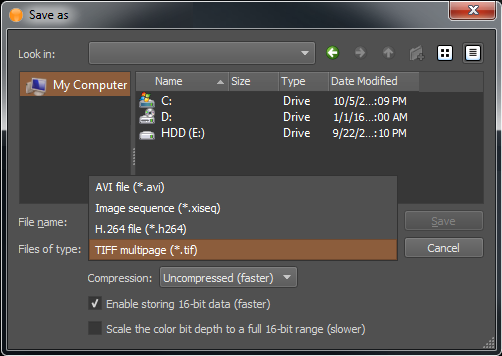
Video formats that are supported with respective settings:
Note: We test the playback of recorded data using the CamTool and also with VLC. Other decoders might also work, but the full functionality in all camera modes is not guaranteed.
Image sequences that are supported with respective settings:
This mode allows to save video directly to the selected drive.
Shortcut for recording video to file is CTRL + R.

This recording mode allows to store captured images to memory or to drives. It allows to record from several cameras simultaneously (since V4.17.49).
When loop record comes to an end of the loop size, the recording process continues to store the next image by replacing the oldest recorded image.
This ensures that the last N images (frames) will be preserved after recording is stopped.
Shortcut for recording loop is CTRL + L.

It opens a dialog window:
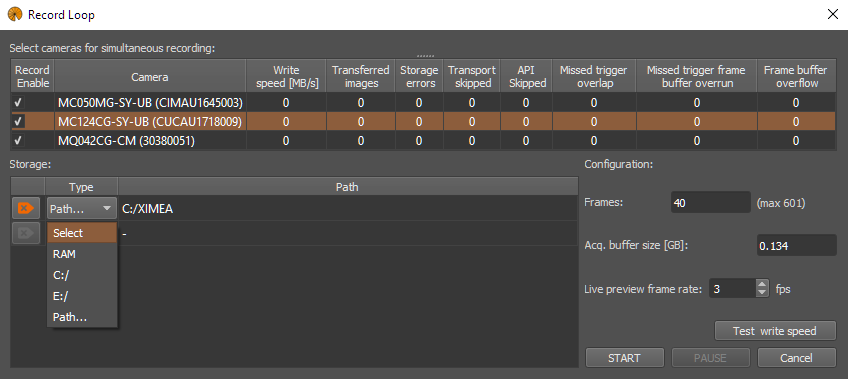
The size of the loop recording determines how many recent frames will be stored.
It can be set in a number of frames.
The maximum Loop size depends on image size and available memory or drive's space.
Acq. buffer size defines the size of the circular buffer which contains image data from the sensor. 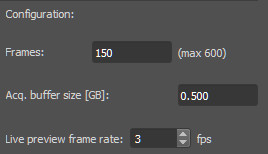
Recording can be started with START button.
Recording can be stopped with STOP button. After stopping the recording process, all recorded frames are ready to be played in CamTool, or to be saved.
For saving image sequence or video, press Save as button under the main menu of CamTool.
Shortcut for "Saving as" is CTRL + S. 
This recording mode allows to specify the interval between two consecutive frames which are to be stored to drive. Shortcut for recording time-lapse is CTRL + P. 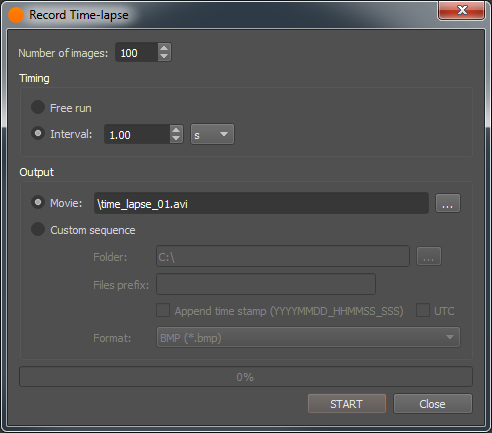
Before Time-lapse is started, the number of images to be acquired has to be set.
After acquisition reaches this image count, the acquisition is stopped.
Two timing modes are available:
Two options are available:
All stored image sequences or video files can have appended time stamp with format YYYYMMDD_HHMMSS_SSS. It is possible to append Coordinated Universal Time (UTC) instead of local time.
For achieving the best performance during recording meet the following recommendations.
For the fastest performance of recording videos, the used system should have the highest possible bandwidth.
It can be influenced by:
Measuring loop record writing speed is started with Test write speed button.
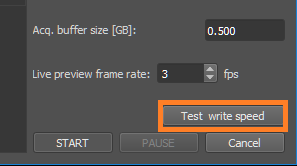
After pressing STOP button, the measured value is displayed in table.
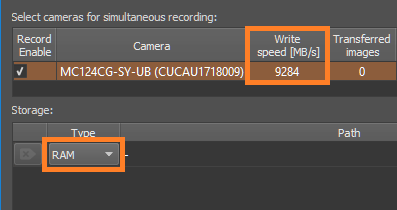
These measured results show approximate average writing speed to the selected storage.
The actual writing speed might differ.